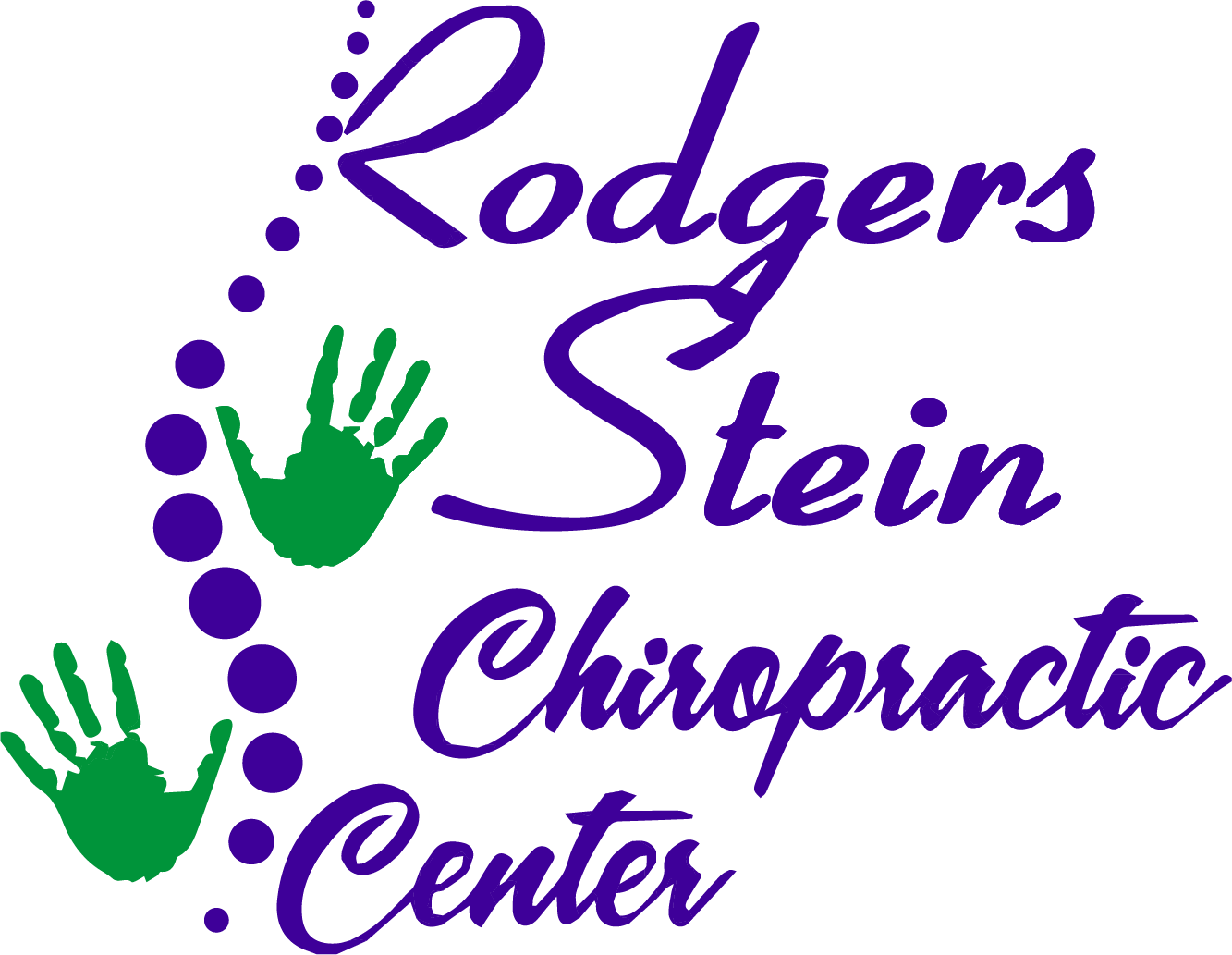If you're struggling with neck pain, you might be considering surgery as a last resort. However, there are effective natural solutions that can address your discomfort without the risks associated with invasive procedures. By incorporating targeted exercises, gentle stretches, and ergonomic adjustments into your routine, you can take control of your recovery. Additionally, alternative therapies like acupuncture and massage therapy offer promising relief. But before you dismiss these options, it's crucial to understand how they work and what lifestyle changes you can make to prevent future pain. Let's explore these alternatives together.
Understanding Neck Pain
Neck pain is a common issue that many people experience at some point in their lives. You might feel it as a sharp twinge or a dull ache, and it can result from various factors. Poor posture, muscle strain, or even stress can contribute to that uncomfortable sensation in your neck. Understanding the underlying causes is vital for addressing the pain effectively.
You may find that your neck pain often stems from everyday habits, like slouching at your desk or craning your neck to look at your phone. These repetitive motions can cause tension in the muscles and joints, leading to discomfort.
Additionally, injuries from sports or accidents might also be responsible for your pain, resulting in stiffness and limited mobility.
Another aspect you should consider is how emotional stress can manifest physically. When you're stressed, your body tends to tense up, particularly in the neck and shoulder areas. This tension can create a vicious cycle, as the pain can further increase your stress levels, making it even harder to find relief.
Lastly, age-related issues, such as degenerative discs or arthritis, can play a role in neck pain. As you get older, the wear and tear on your spine can lead to discomfort, but it's important to differentiate between occasional soreness and chronic pain.
Benefits of Natural Solutions
When you seek relief from neck pain, natural solutions can offer a host of benefits that promote overall well-being. Unlike invasive treatments, these methods often come with fewer side effects and risks. You'll find that options like herbal remedies, acupuncture, and mindfulness practices effectively alleviate discomfort while enhancing your body's natural healing processes.
One of the primary advantages of natural solutions is their holistic approach. They focus not just on alleviating pain but also on addressing underlying issues. This thorough strategy can lead to improved flexibility, better posture, and enhanced overall health. By choosing natural methods, you're treating the root causes rather than just masking the symptoms.
Furthermore, natural solutions encourage you to take an active role in your health. Engaging in practices such as yoga or meditation can empower you to manage your neck pain proactively. You'll also likely notice increased awareness of your body, which can help prevent future injuries.
Financially, natural solutions can be more accessible than surgical options or pharmaceutical treatments. Many remedies can be done at home with minimal expense, saving you both time and money.
Finally, the benefits of natural solutions extend beyond just physical health. Many people report improvements in mental well-being, as these methods often promote relaxation and stress relief. By opting for natural solutions, you're not just addressing neck pain; you're nurturing your body and mind for a healthier, more balanced life.
Targeted Neck Exercises
When it comes to managing neck pain, targeted neck exercises can make a significant difference.
By strengthening your neck muscles and improving flexibility and mobility, you'll not only reduce discomfort but also enhance your overall posture.
Let's explore some effective exercises that can help you achieve these benefits.
Strengthening Neck Muscles
Strengthening the muscles that support your neck can greatly reduce pain and improve mobility. By focusing on targeted exercises, you can build a stronger, more resilient neck, which helps alleviate stress on the spine and surrounding tissues.
Start with simple isometric exercises. Press your forehead against your palm while resisting the force for 5-10 seconds, and repeat for several sets. This helps engage the muscles without any movement.
Next, try gentle neck flexion and extension. While seated, slowly tilt your chin to your chest, hold for a moment, and then lift your head to the neutral position. Follow this by tilting your head back gently. Aim for 10-15 repetitions of each.
Lateral neck stretches also contribute to muscle strength. Lean your head to one side, bringing your ear towards your shoulder, and hold for 15-30 seconds before switching sides.
Finally, incorporate shoulder shrugs and rolls. Raise your shoulders towards your ears and release, then roll them backward in a circular motion.
These exercises can help stabilize the neck and reduce discomfort over time. By consistently incorporating these strengthening exercises, you'll find lasting relief from neck pain.
Improving Flexibility and Mobility
Building strength in your neck lays a solid foundation for improving flexibility and mobility. To enhance your neck's range of motion, you can incorporate targeted exercises into your routine.
Start with gentle neck stretches. Slowly tilt your head to the right, bringing your ear toward your shoulder, and hold for 15-30 seconds. Repeat on the left side. This simple stretch helps lengthen the muscles and improves flexibility.
Next, try neck rotations. Sit up straight and gently turn your head to the right until you feel a mild stretch. Hold for a few seconds, then return to the center and switch to the left side. This exercise promotes mobility by encouraging your neck to move freely.
You can also perform chin tucks. Sit or stand with a straight spine and gently tuck your chin towards your chest, engaging the muscles at the back of your neck. Hold for a few seconds, then relax. This strengthens the neck while promoting better posture.
Incorporating these exercises into your daily routine can help alleviate stiffness, enhance flexibility, and improve overall neck mobility.
Effective Stretches for Relief
When you're dealing with neck pain, gentle stretches can make a big difference in your relief.
Incorporating strengthening exercises and posture correction techniques helps support your neck over time.
Let's explore these effective methods to ease your discomfort and promote better neck health.
Gentle Neck Stretches
Neck pain can be a stubborn nuisance, but gentle neck stretches offer a simple and effective way to find relief. Incorporating these stretches into your daily routine can help ease tension and improve flexibility.
Start by sitting comfortably with your back straight. Gently tilt your head to the right, bringing your ear toward your shoulder. Hold this position for about 15-30 seconds, feeling the stretch along the left side of your neck. Switch sides and repeat.
Next, try a forward stretch: lower your chin toward your chest, allowing your neck to relax. Hold for 15-30 seconds to relieve tightness in the back of your neck.
For an additional stretch, sit up tall and slowly turn your head to the right, keeping your shoulders relaxed. Hold for 15-30 seconds before turning to the left.
Finally, interlace your fingers behind your head, gently pressing forward while keeping your elbows wide. This can help open up your chest and stretch the neck simultaneously.
Incorporating these gentle neck stretches can make a significant difference in alleviating discomfort and enhancing your overall neck health. Remember to breathe deeply and listen to your body throughout each stretch.
Strengthening Exercises
While gentle stretches are essential for relieving tension, strengthening exercises can also play an important role in enhancing your neck's resilience and reducing pain. These exercises help build the muscles that support your neck, making it less vulnerable to strain and injury.
Start with isometric exercises, where you push your head against your hand without moving it. Hold for 5-10 seconds on each side. This technique activates your neck muscles without excessive strain.
Next, try chin tucks. Gently pull your chin back toward your neck while keeping your spine straight. Hold for 5 seconds and repeat 10 times. This exercise strengthens the deep neck flexors, improving stability.
You can also perform neck rotations. Sit or stand with a straight back and slowly turn your head to one side, hold for a few seconds, then switch sides. Aim for 5-10 repetitions on each side.
Finally, incorporate shoulder shrugs by lifting your shoulders toward your ears and then relaxing them down. Repeat this 10-15 times.
Incorporating these strengthening exercises into your routine won't only help alleviate neck pain but also promote long-term health and flexibility.
Posture Correction Techniques
Improving your posture is key to alleviating neck pain and enhancing overall comfort. You'll want to focus on a few effective stretches that can help realign your spine and relieve tension in your neck.
Start with the chin tuck. Sit or stand up straight, and gently tuck your chin to your chest while keeping your shoulders relaxed. Hold for five seconds, then release. Repeat this five times.
Next, try the neck stretch. While sitting, tilt your head to the right, bringing your ear toward your shoulder. Hold for 15 seconds, then switch sides. This stretch helps to release tightness along the sides of your neck.
Another great option is the shoulder roll. Sit up straight, and lift your shoulders toward your ears. Roll them back and down, creating a circular motion. Do this for about 10 repetitions.
Finally, practice the wall angel. Stand with your back against a wall, arms at 90 degrees. Slide your arms up and down the wall while keeping your shoulders and back flat against it.
These stretches, when done regularly, can considerably improve your posture and reduce neck pain.
Acupuncture for Neck Pain
When it comes to alleviating neck pain, acupuncture offers a unique approach that combines ancient wisdom with modern healing techniques. This practice, rooted in Traditional Chinese Medicine, involves inserting thin needles into specific points on your body to stimulate energy flow or "qi." By targeting these points, acupuncture can help reduce inflammation, improve circulation, and release tension in the muscles around your neck.
You might wonder how it works. The needles trigger your body's natural pain-relieving chemicals, such as endorphins, and promote blood flow to the affected area. This can lead to reduced pain and a greater range of motion in your neck. Many people find that even a single session can provide noticeable relief, while others benefit from a series of treatments.
Before you begin, it's crucial to consult with a certified acupuncturist who's experience treating neck pain. They'll assess your specific condition and customize a treatment plan tailored to your needs. You may feel a slight pinch when the needles are inserted, but most patients describe the sensation as relaxing rather than painful.
Incorporating acupuncture into your pain management routine can be a great option, especially if you prefer a drug-free alternative. Whether you're dealing with chronic issues or occasional stiffness, acupuncture can help restore balance to your body and promote healing.
If you're ready to explore this natural solution, consider scheduling your first appointment soon!
Chiropractic Care Options
Have you considered chiropractic care as a solution for your neck pain? Chiropractic care focuses on diagnosing and treating musculoskeletal issues, emphasizing spinal alignment and overall body function. Many people find relief from neck pain through various chiropractic techniques, which can help restore mobility and alleviate discomfort.
When you visit a chiropractor, they'll assess your neck's alignment, range of motion, and any muscle tension. Based on their findings, they'll create a personalized treatment plan tailored to your needs.
Common chiropractic treatments for neck pain include spinal manipulation, adjustments, and mobilization techniques. These methods aim to reduce pain, improve function, and promote natural healing.
Spinal manipulation involves applying controlled force to specific joints in your neck to restore proper alignment. This technique can relieve pressure on nerves and improve blood flow. Adjustments may also involve gentle stretching and targeted pressure to release muscle tension and improve mobility.
Additionally, chiropractors often incorporate exercises and stretches into your treatment plan to strengthen neck muscles and prevent future injuries.
You might also benefit from lifestyle recommendations, such as improving your posture and ergonomics at work. Your chiropractor can guide you on how to make these adjustments to minimize strain on your neck.
If you're looking for a non-invasive approach to manage your neck pain, chiropractic care might be worth exploring. It's crucial to find a qualified chiropractor who can provide the care you need to regain your comfort and mobility.
The Role of Massage Therapy
How can massage therapy help alleviate your neck pain? This hands-on approach directly targets the muscles and connective tissues, promoting relaxation and reducing tension in your neck.
When a skilled massage therapist works on your neck, they can identify tight spots and knots that contribute to discomfort. By applying various techniques, such as kneading and stretching, they help release built-up tension, enhancing blood flow to the affected area.
You might find that regular massage sessions not only provide immediate relief but also help prevent future episodes of pain. By incorporating massage into your routine, you can improve your overall flexibility and range of motion, making everyday activities more manageable. This is especially beneficial if your neck pain stems from poor posture or repetitive strain.
Beyond physical benefits, massage therapy also offers psychological relief. It can reduce stress and promote a sense of well-being, which is critical, as emotional tension often exacerbates physical discomfort. Feeling more relaxed can lead to improved sleep, further aiding in your recovery process.
Before starting massage therapy, it's important to consult with a healthcare professional to verify it's suitable for your specific condition. They can guide you on how often to schedule sessions and which techniques may work best for your needs.
Herbal Remedies to Consider
While massage therapy can provide immediate relief for neck pain, exploring herbal remedies might offer additional support for long-term management. Many herbs have anti-inflammatory and analgesic properties that can help alleviate discomfort and promote healing.
One popular option is turmeric, which contains curcumin, known for its powerful anti-inflammatory effects. You can take it as a supplement or add it to your meals to enjoy its benefits.
Another great choice is ginger. This root not only eases inflammation but also improves circulation. You can consume it as a tea or in your cooking.
Willow bark is another herbal remedy worth examining. Often referred to as "nature's aspirin," it contains salicin, which has pain-relieving properties. You can find it in tea or supplement form, but always check with a healthcare provider before starting any new supplement.
You might also want to explore arnica, a herb applied topically. It helps reduce swelling and pain when used as a cream or gel. Just be sure to avoid using it on broken skin.
Finally, peppermint oil is fantastic for topical application. Its cooling sensation can help soothe sore muscles, and its anti-inflammatory properties can provide additional relief. Just mix a few drops with a carrier oil before applying.
Incorporating these herbal remedies into your routine could enhance your neck pain management strategy. However, always consult with a healthcare professional before trying any new treatment to verify it's suitable for your needs.
Lifestyle Changes for Prevention
Making simple lifestyle changes can greatly reduce your risk of neck pain. First, pay attention to your posture, especially when you're sitting at a desk or using your phone. Keep your shoulders relaxed and your head aligned with your spine.
Consider investing in an ergonomic chair and setting your computer screen at eye level to minimize strain on your neck.
Next, take regular breaks from prolonged periods of sitting. Stand up, stretch, and move around every 30 minutes. This not only helps prevent stiffness but also encourages better circulation.
Incorporating gentle neck stretches into your daily routine can also be beneficial. Try tilting your head side to side and gently rolling your shoulders to relieve tension.
Another vital change involves your sleep environment. Confirm your pillow supports your neck properly. A pillow that's too high or too flat can lead to misalignment and discomfort.
Opt for a medium-firm pillow that keeps your neck and spine in a neutral position.
Staying active plays a major role in neck pain prevention. Engage in regular exercise, focusing on activities that strengthen your neck, shoulders, and upper back.
Yoga and Pilates can improve flexibility and posture, while low-impact aerobic exercises can enhance overall body strength.
Lastly, manage stress effectively. Stress can lead to muscle tension, especially in your neck. Techniques like meditation, deep breathing, or even a simple walk can help alleviate stress and contribute to a healthier neck.
When to Seek Professional Help
If your neck pain lingers for more than a few days, it's time to contemplate professional help.
Watch for neurological symptoms like numbness or weakness, as these could indicate a more serious issue.
Additionally, if your pain interferes with daily life, seeking advice from a healthcare professional is essential.
Persistent Pain Duration
Persistent neck pain can be a frustrating experience, leaving you wondering when it's time to seek professional help. If your neck pain lingers for more than a few days despite trying natural remedies, it might be a sign that you need to consult a healthcare professional.
Don't ignore pain that intensifies over time or disrupts your daily activities, as this could indicate an underlying issue that requires attention. Additionally, if you notice that your pain isn't improving with self-care measures—like gentle stretches, heat therapy, or over-the-counter medications—it's a good idea to reach out for professional guidance.
You should also pay attention to any changes in your range of motion. If you're finding it increasingly difficult to turn your head or perform routine tasks, seeking help is essential.
Finally, if your pain is accompanied by unusual symptoms or if it starts affecting your sleep, it's time to make an appointment. Trust your instincts; if something feels off, don't hesitate to get a professional opinion. Early intervention can help prevent more significant problems down the road.
Neurological Symptoms Present
Noticing neurological symptoms alongside neck pain is a serious matter that requires immediate attention. These symptoms can include tingling, numbness, weakness in your arms or legs, or difficulty with coordination. If you experience any of these signs, it's essential to seek professional help promptly. Ignoring these symptoms could lead to further complications.
Your neck houses critical nerves that connect your brain to your body. When neck pain is accompanied by neurological issues, it may indicate a more considerable problem, such as a herniated disc or spinal cord compression. These conditions can worsen if not addressed quickly.
Don't hesitate to consult a healthcare professional if you notice any unusual sensations or loss of motor function. They'll conduct a thorough examination and might recommend imaging tests to determine the underlying cause of your symptoms.
Even if the symptoms seem mild at first, it's better to err on the side of caution. Early intervention can greatly improve your prognosis and prevent long-term damage.
Listen to your body; if something feels off, get it checked out. Your health is worth it.
Impact on Daily Life
Neck pain can greatly impact your daily life, making simple tasks feel intimidating. When you're struggling with discomfort, you may find it hard to focus on your work, enjoy leisure activities, or even complete basic chores.
It's crucial to recognize when to seek professional help, as ignoring persistent pain can lead to more significant issues. Here are some signs that it's time to consult a healthcare professional:
- Persistent pain: If your neck pain lasts longer than a few weeks despite trying home remedies, it's a red flag.
- Pain radiating down your arms: This could indicate nerve involvement and warrants a medical evaluation.
- Numbness or tingling: If you experience these sensations in your arms or hands, don't wait to seek help.
- Difficulty moving your head: Limited range of motion can signal underlying problems that need attention.
You shouldn't ignore these symptoms. By seeking help early, you can prevent further complications and find the right treatment to alleviate your pain.
Conclusion
To sum up, embracing natural solutions for neck pain can empower you to take charge of your healing journey. By incorporating targeted exercises, gentle stretches, and holistic therapies like acupuncture and massage, you can find relief without the risks of surgery. Remember to prioritize lifestyle changes and stress management to support your overall neck health. If your pain persists or worsens, don't hesitate to seek professional help. You deserve a pain-free, active life!



